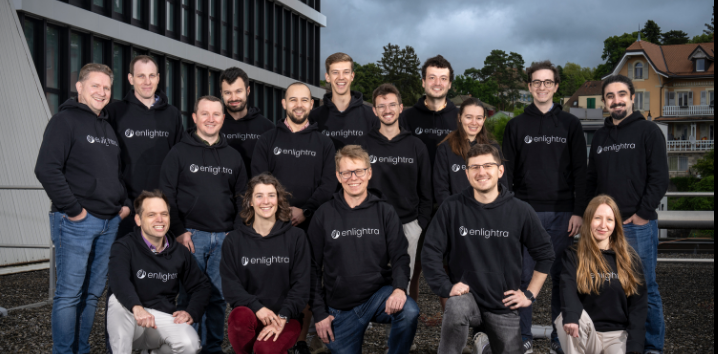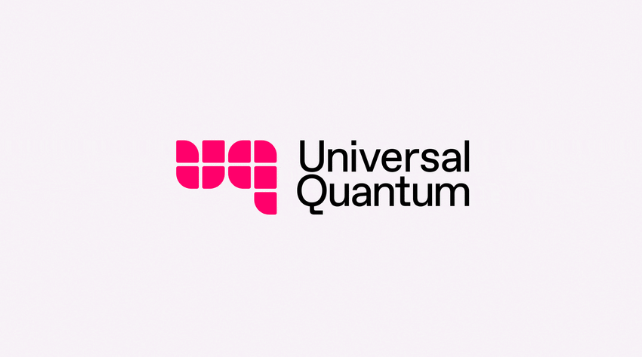Insider Brief
- Microsoft and Atom Computing have launched a commercial quantum machine featuring 24 logical qubits, the largest number of entangled logical qubits recorded, available for delivery in 2025.
- Built on Atom Computing’s neutral-atom qubit technology and Microsoft’s qubit-virtualization system, the machine achieves error rates significantly lower than physical qubits, enabling reliable quantum computations critical for solving complex problems.
- Integrated with Microsoft’s Azure Quantum platform, the system combines quantum capabilities with AI and high-performance computing, targeting applications in chemistry, materials science, and other fields while supporting education and workforce development.
Microsoft and Atom Computing have announced the unveiling of a quantum machine featuring 24 logical qubits — reportedly the largest number of entangled logical qubits achieved to date. They have also demonstrated the ability to detect and correct errors, and perform computation, on 28 logical qubits.
The system, built with neutral-atom qubits and integrated into Microsoft’s Azure Quantum platform, is not an experimental device — the system is available to order now, with delivery set for 2025, according to a Microsoft blog post written by Krysta Svore, Technical Fellow, Advanced Quantum Development, Quantum at Microsoft.
This collaboration marks a major step toward scalable, reliable quantum computing, paving the way for solving complex problems in science and industry.

“We are excited to continue our collaboration with Microsoft, which has already led to significant
milestones in quantum computing,” said Ben Bloom, Founder and CEO of Atom Computing, as reported in the post. “By coupling our state-of-the-art neutral-atom qubits with Microsoft’s qubit-virtualization system, we are now able to offer reliable logical qubits on a commercial quantum machine. This system will enable rapid progress in multiple fields including chemistry and materials science.”
The companies published a research paper reviewing the findings on the pre-print server ArXiv.
The teams plan to discuss the advance and how quantum and AI can unlock applications for science at upcoming events, including Microsoft Ignite and an upcoming joint Microsft-Atom Computing webinar in January.
Advancing Quantum Reliability
At the heart of the device are neutral-atom qubits developed by Atom Computing, which are manipulated using pulses of light to store and process quantum information. Unlike other qubit types, neutral atoms are less susceptible to noise that can wreck quantum computations and allow for high fidelity, essential for quantum error correction. This capability makes neutral atoms a promising candidate for scalable quantum systems.
Svore writes: “Neutral atoms also have low susceptibility to noise and the high fidelities needed for quantum error correction to work. Due to their lack of charge, neutral atoms can be kept only microns (millionths of a meter) apart. Thus, atomic arrays can accommodate large numbers of neutral atoms, each of which serves as a physical qubit, in a small amount of space, offering extensive scalability.”
The two companies combined their expertise to create 24 logical qubits, which surpass physical qubits in reliability by using Microsoft’s qubit-virtualization system to detect and correct errors, according to the post. These logical qubits were entangled in a Greenberger-Horne-Zeilinger (GHZ) state, which is a specific quantum configuration where multiple logical qubits are entangled in a way that ensures their behaviors are deeply interconnected. In essence, this demonstrates the machine’s ability to maintain quantum coherence across the 24 qubits — a step toward advancing reliable quantum computations.
Svore writes: “When using neutral atoms as qubits and attempting to hold them in place with lasers, some atoms can still become lost, resulting in a loss of that qubit and its quantum information. Thus, the teams took steps to not only detect errors but also to detect and correct losses of neutral-atom qubits during experiments.”
The system’s error rates were significantly reduced during testing, achieving 9.5% for logical qubits compared to 41.5% for their physical counterparts, the blog post reports.
Why Logical Qubits Matter
Quantum computers rely on qubits to perform operations, but physical qubits are inherently error-prone due to their sensitivity to environmental disturbances. Logical qubits, created by combining multiple physical qubits with error correction protocols, address this challenge by reducing error rates and improving computational reliability.
Neutral atoms offer a unique advantage. Their lack of electrical charge allows them to be tightly packed and precisely manipulated using lasers, enabling all-to-all connectivity. Atom Computing’s recent achievement of 99.6% fidelity in two-qubit gates highlights their readiness for scalable applications.
These advancements are critical for achieving “scientific quantum advantage,” the point where quantum systems can solve problems beyond the reach of classical computers. The ability to detect and correct errors in real time is a key milestone on this path, the post suggests.
Integration with Azure Quantum and AI
The new system is integrated with Microsoft’s Azure Quantum platform, which combines quantum hardware with classical high-performance computing (HPC) and artificial intelligence. The platform includes tools like Azure Elements, which accelerates research in areas such as generative chemistry and materials discovery by leveraging quantum capabilities.
Azure Elements uses generative AI to propose novel molecules and models quantum properties faster than traditional methods. This integration ensures that the quantum machine is not only a research tool but also a driver of innovation in industries like pharmaceuticals, energy, and advanced materials.
Commercial Implications
The system’s availability as a commercial offering could be a seen as a shift in the quantum industry. Traditionally, quantum machines have been limited to experimental or academic use. Microsoft and Atom Computing’s solution provides a turnkey platform that blends cutting-edge quantum technology with user-friendly tools for immediate application.
The implications extend beyond academia. Businesses exploring quantum computing’s potential in logistics, finance, and cryptography can now experiment with a more reliable platform. The system also supports education and workforce development, equipping users to navigate the emerging quantum economy.
How It Works
The collaboration leveraged Atom Computing’s neutral-atom qubits and Microsoft’s software innovations to create and entangle logical qubits. The process involved trapping neutral atoms in arrays using lasers, then applying precise pulses to perform operations. Logical qubits were formed by grouping physical qubits, enabling error detection and correction.
Key achievements include the ability to detect and correct atom loss—a common issue in neutral-atom systems. This marks the first commercial demonstration of loss correction in such a platform, with error rates reduced by up to 4.4 times compared to baseline physical qubits.
In one experiment, 20 of the logical qubits were used to solve the Bernstein-Vazirani algorithm, a benchmark problem in quantum computing. The logical qubits produced more accurate results than physical qubits, demonstrating the practical benefits of error correction.
Future Directions
Looking ahead, Microsoft and Atom Computing aim to scale the system further, with a focus on reducing error rates and increasing qubit counts. The integration of quantum capabilities with AI and HPC is expected to open new research avenues in climate modeling, drug discovery, and materials science.
The companies also emphasized the importance of user accessibility. By offering the system as part of Azure Quantum, they hope to democratize access to advanced quantum tools, enabling more organizations to explore its potential.
To learn more about the advances, register for the Microsoft Ignite event and an upcoming joint Microsft-Atom Computing webinar in January.


















